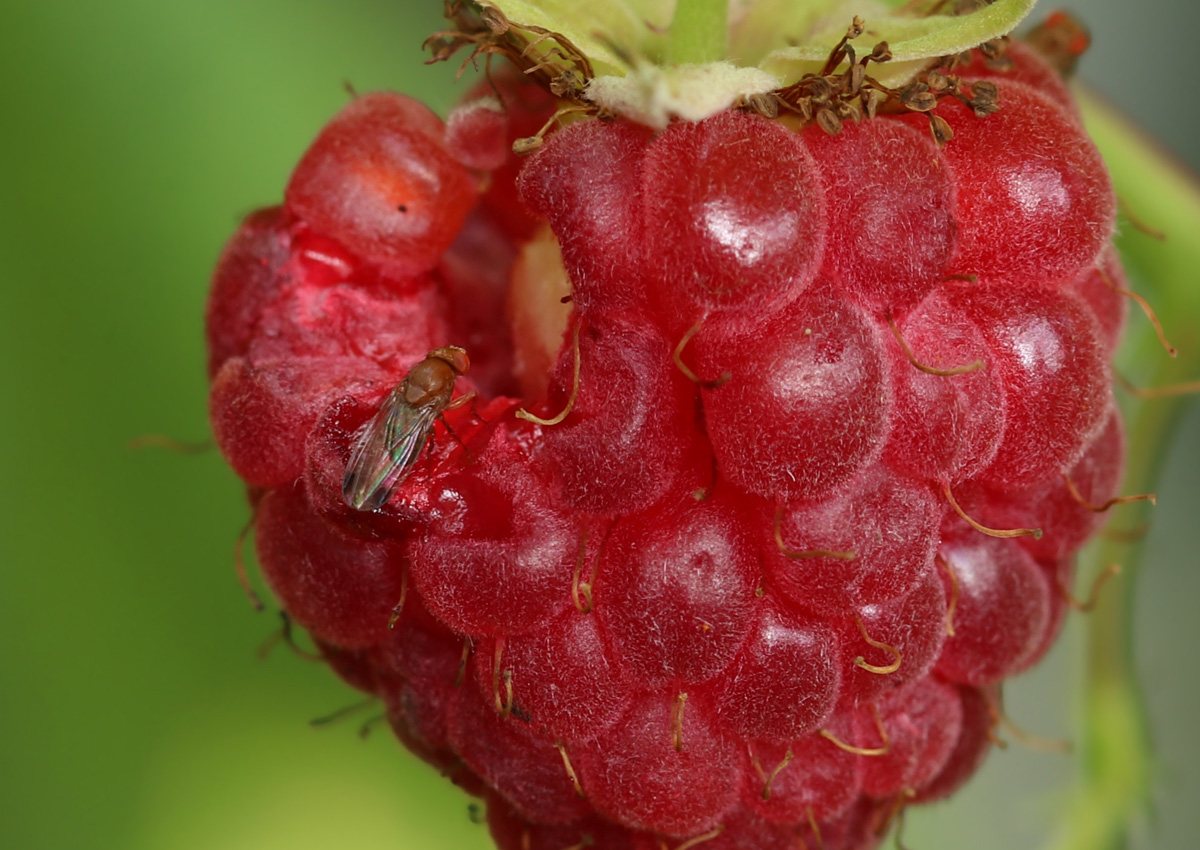
CRISPR-based Method Could Check Crop Pests
September 28, 2022| |
Drosophila suzukii is an invasive insect pest that poses a threat to agricultural yields, particularly of fruits such as berries, cherries, plums, and grapes, in western countries. An article recently published in GEN Biotechnology reports the development of a programmable CRISPR-based method that could potentially replace fertile male D. suzukii with sterile counterparts, and safely curb this pest population.
The researchers at the University of California San Diego, including Nikolay Kandul, Junru Liu, Anna Buchman, and Omar Akbari, use a temperature-inducible, precision-guided, sterile insect technique (pgSIT), reported by the team in an earlier study, to generate infertile, but fit and competitive D. suzukii males with slightly reduced lifespans. Experiments conducted by the team showed that repeated release of sterilized males can rapidly and successfully curb or eliminate D. suzukii populations.
The pgSIT system edits genes for sex and fertility. The authors used two transgenic D. suzukii strains, one expressing Cas9 in germline and somatic cells, and another expressing guide RNAs that target genes essential for female survival and male fertility. The technique produced up to 100% sterile males, with females either killed or turned into intersex flies.
The authors showed that the pgSIT system was effective when pgSIT sterile males are released at ratios comparable to approaches that use conditional female lethality strains, and are lower than the release ratios recommended for conventional SIT (sterile insect technique) paradigms. The researchers also showed that combining pgSIT D. suzukii with wildtype males significantly decreased the egg hatching rate, showing the competitiveness of the sterile males and their success with wildtype males in mating with females. The study also showed that increasing release ratios of pgSIT males to wild-type males increased the rate of population decline.
For more details, read the article in Genetic Engineering and Biotechnology News.
| |
You might also like:
- UC San Diego Researchers Use CRISPR to Target Global Crop Pest
- Researchers Develop First Gene Drive Targeting World's Invasive Crop Pest
- Researchers Generate Whole Genome Map of Fruit Fly Genetic Recombination
Biotech Updates is a weekly newsletter of ISAAA, a not-for-profit organization. It is distributed for free to over 22,000 subscribers worldwide to inform them about the key developments in biosciences, especially in biotechnology. Your support will help us in our mission to feed the world with knowledge. You can help by donating as little as $10.
-
See more articles:
-
Gene Drive Supplement (September 28, 2022)
- Gene Drive Consortium Outlines Best Practices in Stakeholder Engagement
- CRISPR-based Method Could Check Crop Pests
- "It's Time to Bite Back Against Mosquitoes"
- Experts Weigh in on the Eradication of Mosquitoes that Transmit Deadly Diseases
- National Biosafety Authorities Should be Responsible for Gene Drive Risk Assessment and Regulation
-
Read the latest: - Biotech Updates (December 17, 2025)
- Gene Editing Supplement (December 17, 2025)
- Gene Drive Supplement (February 22, 2023)
-
Subscribe to BU: - Share
- Tweet

